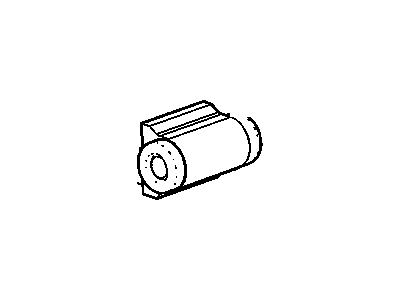
My Garage
My Account
Cart
Genuine Chevrolet Cruze Wheel Cylinder
Brake Wheel Cylinder- Select Vehicle by Model
- Select Vehicle by VIN
Select Vehicle by Model
orMake
Model
Year
Select Vehicle by VIN
For the most accurate results, select vehicle by your VIN (Vehicle Identification Number).
1 Wheel Cylinder found
Chevrolet Cruze Cylinder Assembly, Rear Brk
Part Number: 42589968$31.13 MSRP: $58.75You Save: $27.62 (48%)Ships in 1-2 Business Days
Chevrolet Cruze Wheel Cylinder
The Wheel Cylinder in Chevrolet Cruze cars is part of hydraulic drum brake system and its purpose is to exert pressure on the brake shoes in order to create proper contact with the brake drum in order to stop. It has a hydraulic pressure, which lifts the pistons within the cylinder thus pulling the shoes to make contact with the drum. Some of the components of Chevrolet Cruze Wheel Cylinder are, a central cylinder, two pistons with rubber seals, a spring used to keep the seals in place. Yearly, Chevrolet Cruze models have applied cast iron and aluminum wheel cylinder but most of the latest models use aluminum thus avoiding rust. Some designs have the engine and transmission assembly being capable of either a single or double single-piston configuration but the principal role varies not. Maintenance should be frequent to avoid the breakage of seals that cause dragging which requires either new Wheel Cylinder or rebuilding of the same to gain efficiency in the usage of the wheel brakes.
Each OEM Chevrolet Cruze Wheel Cylinder we offer is competitively priced and comes with the assurance of the manufacturer's warranty for the part. Furthermore, we guarantee the speedy delivery of your orders right to your doorstep. Our hassle-free return policy is also in place for your peace of mind.
Chevrolet Cruze Wheel Cylinder Parts Questions & Experts Answers
- Q: How to replace wheel cylinders when indicated due to fluid leakage or sticky operation on Chevrolet Cruze?A:For instance, if replacement is necessary, normally said to be necessary when the wheel cylinders fluid leakage or they are sticky, then it is preferable that the wheel cylinders be replaced in sets and not rebuilt. First, secure the front wheels to that the vehicle does not move with the handbrakes, next slackening the bolts of the rear wheel, lifting the rear part of the vehicle to the extent that it is safely supported by the jack stand. Then, it is necessary to unbolt the wheel, disengage the parking lock and then also unbolt the brake drum. Following that, take off the Brake Shoes and wash out all dirt and any other material from around the wheel cylinder. At the rear of the backing plate still, if you have access to a flare-nut wrench, then undo the brake line fitting to the brake line without pulling the brake line away from the cylinder in order to avoid making a kink of it. Open the vehicle and also take off the wheel cylinder bleeder screw with its cap, also withdraw the wheel cylinder mounting bolts and come out the wheel cylinder from the backing plate. In installation the new wheel cylinder is fitted in position, the brake line fitting should be only finger tight then the wheel cylinder mounting bolts are tightened to the required torque. Vinyl & rubber brake line fitting should be securely tightened followed by the installation of the bleeder screw and cap. After that, should replace the brake shoes and then cover it with the brake drum that is located on the hub flange of the car and the wheel and lug nuts of the car should be placed back again. Last but not the least, the brake system is to be bled, the vehicle is to be lowered down and the lug nuts are to be tightened according to the prescribed torque while prior to the test drive it is essential to ensure that the brakes are functioning properly or not before going into traffic.








